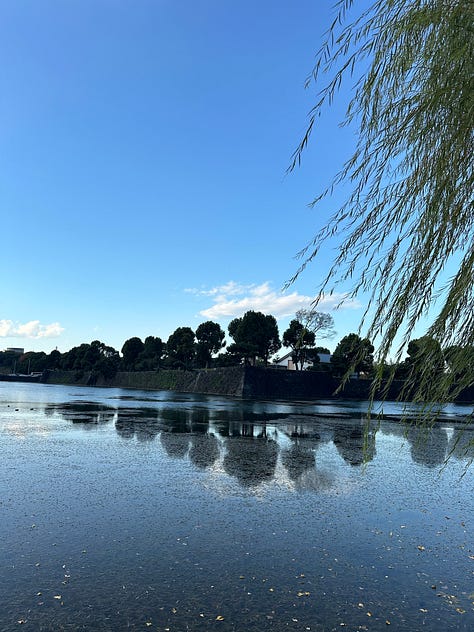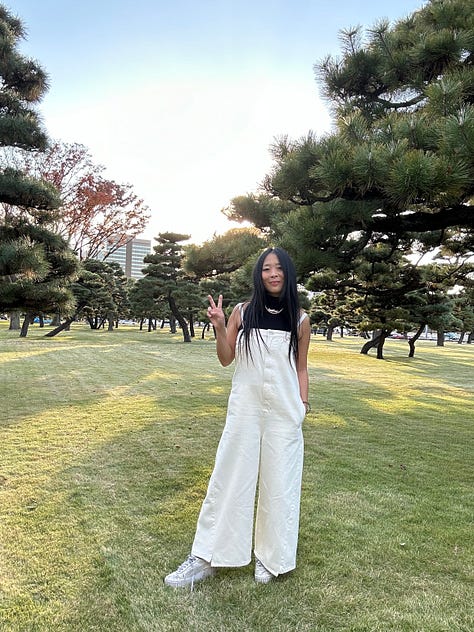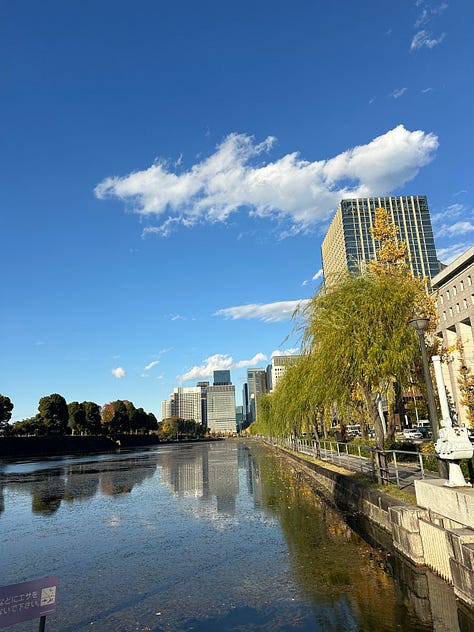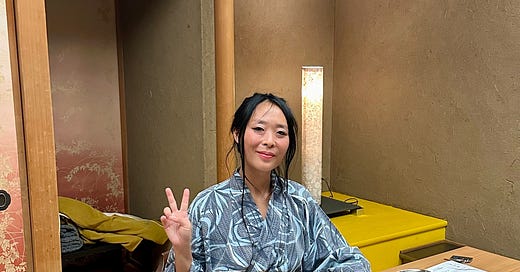Taste Tokyo: My Kaiseki Recommendation That Captures the Art of Japan’s Food Culture
Here’s the thing about Japan: everything you eat is good. Whether it’s a quick snack from 7-11 or a multi-course kaiseki meal, the food is consistently amazing—and affordable.
What makes it so special?
Simplicity and focus: Each restaurant typically specializes in one dish and perfects it. Think ramen spots with just four menu items or a restaurant only focusing on grilled chicken dishes.
Clean flavors: The food is fresh and balanced. Generally, most dishes don’t have too many spices in it and the ingredients are the focus.
Affordable luxury: You don’t have to spend a fortune to eat like royalty in Japan. A 7-11 rice ball (onigiri) will put any overpriced snack back home to shame, and even high-end tasting menus are shockingly affordable. It’s the kind of deal that makes me want to brag about what a great deal it is. Like I hope someone asks so I can say, CAN YOU BELIEVE IT? IT WAS ONLY….
Japan’s food scene is so wildly diverse and impressive that I couldn’t possibly cram it all into one article. So, I’ve decided to break it down—each post will take you deeper into one aspect of Japan’s incredible food culture (so make sure you subscribe to my Substack to dive deep into my Japan food recs!). Let’s start at the top with kaiseki: the pinnacle of Japanese fine dining.
Kaiseki originated from the tea ceremony, where small, delicate dishes were served to complement the tea. Over centuries, it evolved into a sophisticated, multi-course dining style that showcases the chef's artistry and respect for nature. As a local food queen, I love the kaiseki uses the principle of shun, showcasing seasonal ingredients in flavor and display. You’ll see in my photos of a kaiseki in Tokyo that the natural beauty is of the ingredients is displayed like art. Kaiseki usually follows a specific format, that flows like a symphony.
Sakizuke - a small appetizer that sets the tone for the meal
Hassun - seasonal platter, often featuring a combination of small bites to highlight the theme of the meal
Mukozuke - sashimi course
Takiawase - simmered or braised vegetables
Futamono - a lidded dish, typically a soup like clear broth with seasonal ingredients or steamed egg custard
Yakimono - a grilled seasonal fish
Takiawase: a simmered dish, typically of vegetables mixed with some meat
Sunomono - a light dish featuring seafood and vegetables in vinegar dressings, intentionally used as a palate cleanser
Agemono - a fried dish, often tempura-style, adding a crispy texture to the meal
Suimono/Shokuji - palate-cleansing rice dish. The rice is not just white rice you might have in your kitchen. One kaiseki I had in Gunma, Japan had an award winning rice variety specific to the region. The kaiseki in Tokyo featured a rice called “Shiny Princess”.
Mizumono - the dessert course, featuring seasonal fruits, jellies, or sweet treats
Japan has truly mastered the art of plating, especially in a kaiseki. In Tokyo, we were left in awe of plates so beautiful that one of our friends remarked they looked like they could belong to the Ming Dynasty. To our surprise, WHOA!, the restaurant staff confirmed they were, in fact, antiques from the Ming Dynasty! My hands got a little nervous, worried I might accidentally break something.

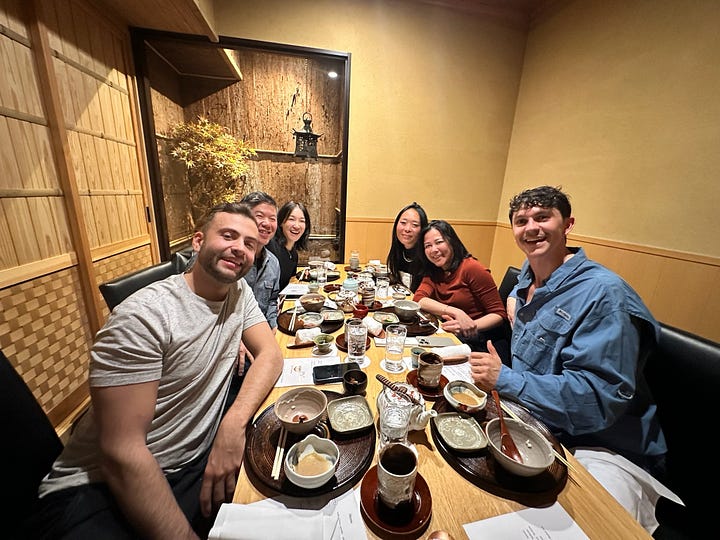
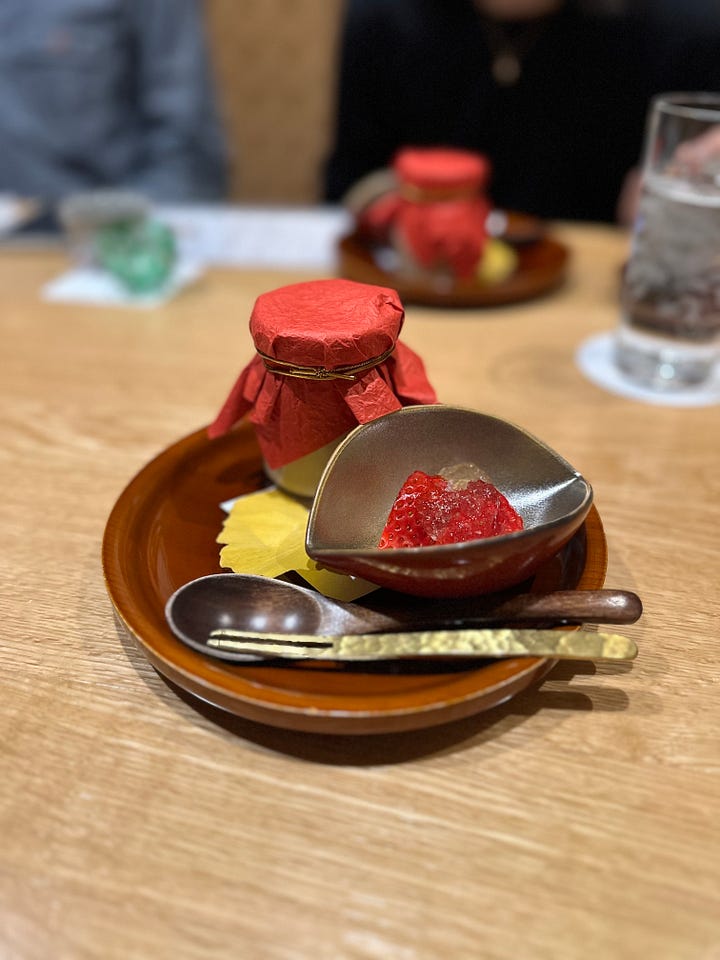

One pro tip from our new friend David was a game changer: book your kaiseki reservation for lunch. Not only is it easier to secure a spot, but it’s also about half the price than dinner! A few things to keep in mind:
Do not arrive late. There’s a strict dining time frame, and you’ll be eating for around two hours. Even with all the courses, I was perfectly full. But your fullness level will also depend on how much sake you drink. So, you can either fill up on sake and tea or savor every bite of the meal!
If you have allergies like I do, make sure to tell the restaurant in advance. If you have a fish allergy, this style of dining may not be for you. Since the courses are meticulously planned, it’s crucial to notify them ahead of time.
Chopstick etiquette is key! Always place your chopsticks back on the holder between courses. I don’t think they even offer forks (and let’s pretend they don’t), so practice your chopstick skills ahead of time!
Dress to impress. While there’s no strict attire requirement, I’d suggest dressing presentably. When you’re dining off of antique plates that may have been used by royalty in the Ming Dynasty, it’s worth stepping up your outfit game. Plus, you’re in Japan, the Mecca of fashion, so why not dress up a little and enjoy the experience?
You’ll likely be sent off with a gift, like the special cloth napkin or chopsticks I’ve received at different kaiseki restaurants. The staff will also walk you out and bow until you’re out of sight. Our new friends, David and Jennifer, shared a heart warming story: at one kaiseki, the chef and manager bowed all the way until they stepped into the elevator, then ran downstairs to be ready to bow again when David and Jennifer arrived at the bottom. Now that’s attention to detail!
Reservations are taken seriously - if you don’t show up, you’ll still have to pay the cost of the meal
My Kaiseki Recommendation in Tokyo
Now, onto the good stuff. I only visited one kaiseki restaurant in Tokyo, but I can confidently say Ginza Kudo was a 5 out of 5 experience. I went with a group of chefs who had dined at several other kaiseki spots, and they said this was probably the best meal of the trip. I never imagined tofu could be prepared in such an extraordinary way, silken on the inside with a crispy outside and a deep sesame dressing. Seems simple but if you could taste it, you’d understand the complexity. Every detail was flawless, from the antique plateware to the sake glasses we got to choose from each time we selected a new sake.
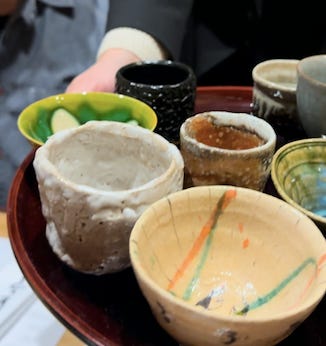

After my amazing lunch at Ginza Kudo, I took a peaceful nap under the Ginkgo trees in the Imperial Garden, just a short walk from the restaurant. If I get the chance on my next visit, I’d love to check out the Japan Denim shop, known for its premium Japanese denim.
Want more insider tips and recommendations on the best food in Tokyo? Be sure to subscribe for all the delicious details in upcoming posts. I’m hungry just thinking back on my food memories.
